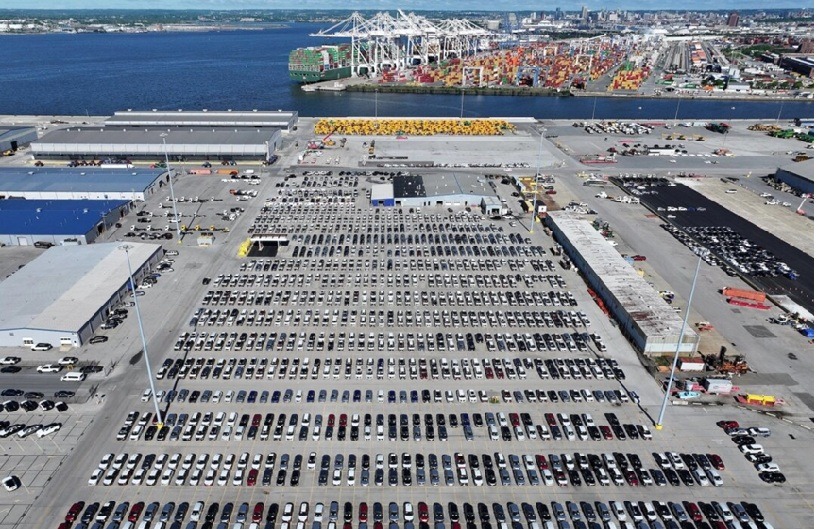The estimate from Anderson Economic Group comes as Stellantis shifts production to U.S. plants, suggesting tariffs may already be reshaping manufacturing plans.

Automobiles are parked at the Port of Baltimore’s import lot, in Baltimore, Md., on May 7, 2025. Win McNamee/Getty Images
U.S. automakers have paid more than $10 billion in tariffs on vehicles and parts imported from Canada and Mexico so far this year, according to a new analysis by Anderson Economic Group—a cost that may already be influencing where companies build, as Stellantis’s recent move to shift production from Canadian to U.S. plants suggests.
In an analysis released on Oct. 16, Anderson Economic Group (AEG) estimates that automakers incurred $6.45 billion in duties through July and projects the total will top $10.6 billion by the end of October, after accounting for missing data and “unpublished corrections” issued by the U.S. Census Bureau.
“Even this figure underestimates the total tariff cost, as it includes only the two major categories of motor vehicle imports, and does not include any separate tariffs on steel and aluminum, nor imports from Europe or Asia,” Patrick L. Anderson, CEO of AEG, said in a statement.
President Donald Trump has said a key aim of his tariff policies is to pressure companies to bring production back to the United States. “If you want your tariff rate to be zero, then you build your product right here in America because there is no tariff if you build your plant, your product in America,” Trump said as he announced his reciprocal tariff policy at the White House in April.
One of the first major companies to respond has been Stellantis, the parent of Chrysler, Jeep, and Ram. In April, Stellantis temporarily paused production at two major assembly plants in Canada and Mexico, and on Oct. 14 announced a $13 billion investment to expand its U.S. manufacturing footprint—the largest single commitment in the company’s history.
The plan includes reopening the Belvidere plant in Illinois, expanding operations in Michigan, Ohio, and Indiana, launching five new vehicle lines, and adding more than 5,000 U.S. jobs.
Stellantis is simultaneously shifting production of some Jeep models currently built in Ontario to U.S. facilities, a decision that has prompted formal threats of legal action from the Canadian government.
Industry Minister Mélanie Joly accused the automaker of breaching subsidy agreements tied to maintaining a manufacturing presence in Brampton, Ontario. In her letter to Stellantis CEO Antonio Filosa, Joly explicitly referenced “the current U.S. tariff environment” and the “complex challenges” it is creating for manufacturers, suggesting that Stellantis is responding to those pressures as it reconsiders its North American production footprint.
Meanwhile, the Trump administration’s tariff policies continue to widen.
Expanding on earlier measures targeting passenger vehicles and components, Trump on Oct. 6 announced a new 25 percent duty on all medium- and heavy-duty trucks entering the United States, citing national security reasons and the need to shield domestic truck makers from foreign disruption. That move follows recent trade arrangements with Japan and the European Union in which the United States imposed 15 percent tariffs on light-duty vehicle imports.
Tom Ozimek is a senior reporter for The Epoch Times. He has a broad background in journalism, deposit insurance, marketing and communications, and adult education.
